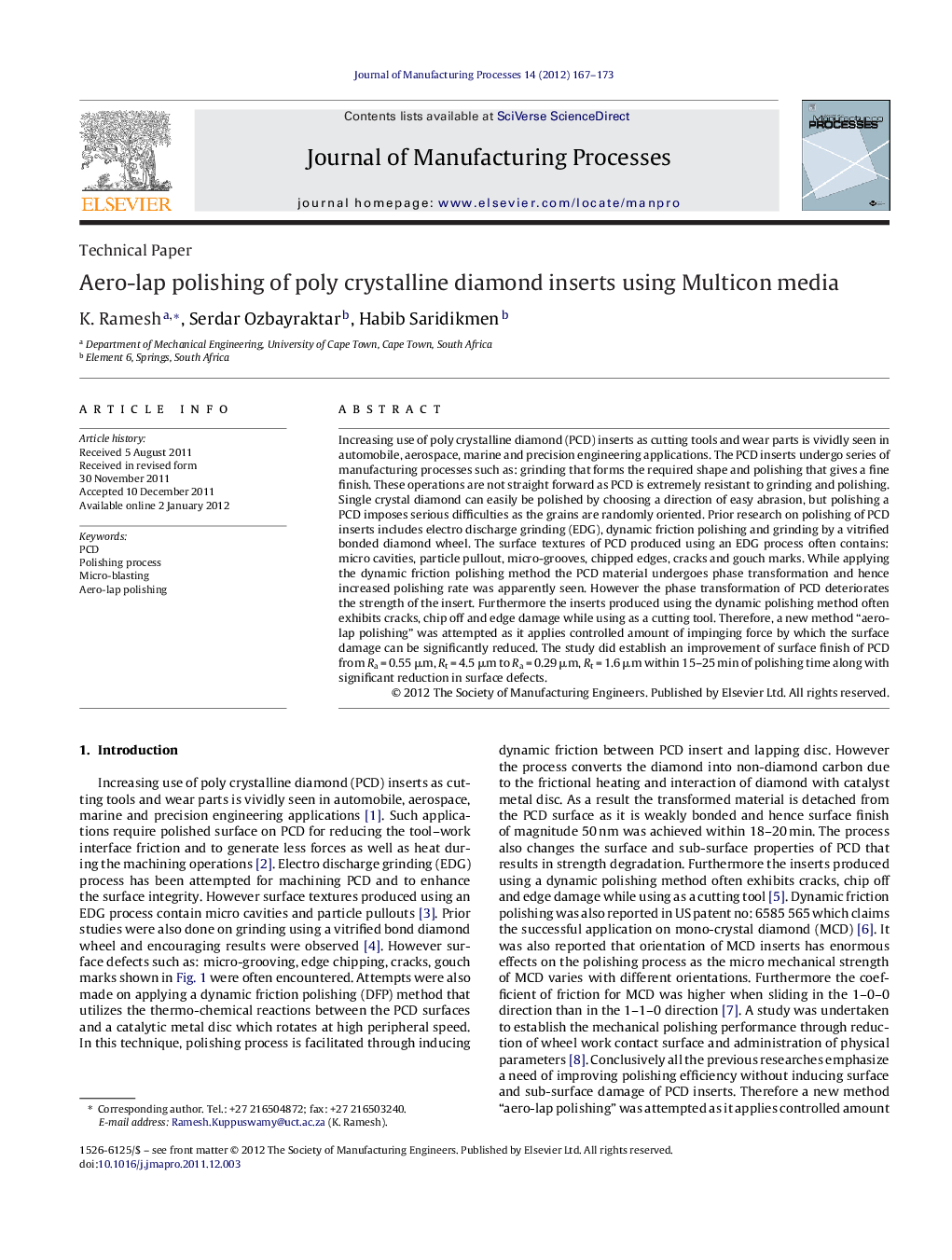| Article ID | Journal | Published Year | Pages | File Type |
|---|---|---|---|---|
| 1697228 | Journal of Manufacturing Processes | 2012 | 7 Pages |
Increasing use of poly crystalline diamond (PCD) inserts as cutting tools and wear parts is vividly seen in automobile, aerospace, marine and precision engineering applications. The PCD inserts undergo series of manufacturing processes such as: grinding that forms the required shape and polishing that gives a fine finish. These operations are not straight forward as PCD is extremely resistant to grinding and polishing. Single crystal diamond can easily be polished by choosing a direction of easy abrasion, but polishing a PCD imposes serious difficulties as the grains are randomly oriented. Prior research on polishing of PCD inserts includes electro discharge grinding (EDG), dynamic friction polishing and grinding by a vitrified bonded diamond wheel. The surface textures of PCD produced using an EDG process often contains: micro cavities, particle pullout, micro-grooves, chipped edges, cracks and gouch marks. While applying the dynamic friction polishing method the PCD material undergoes phase transformation and hence increased polishing rate was apparently seen. However the phase transformation of PCD deteriorates the strength of the insert. Furthermore the inserts produced using the dynamic polishing method often exhibits cracks, chip off and edge damage while using as a cutting tool. Therefore, a new method “aero-lap polishing” was attempted as it applies controlled amount of impinging force by which the surface damage can be significantly reduced. The study did establish an improvement of surface finish of PCD from Ra = 0.55 μm, Rt = 4.5 μm to Ra = 0.29 μm, Rt = 1.6 μm within 15–25 min of polishing time along with significant reduction in surface defects.
